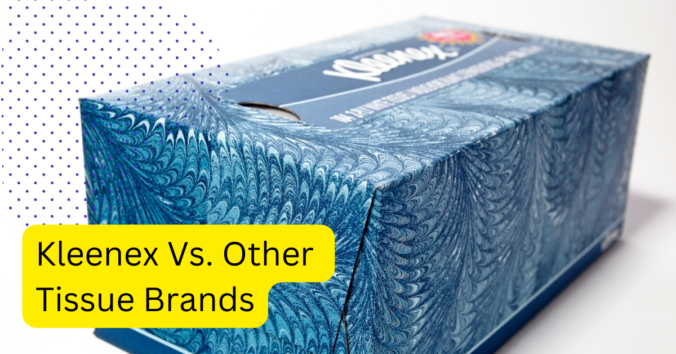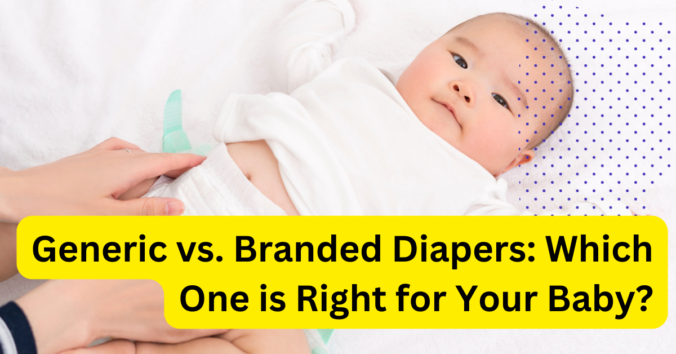Which One Offers Best Quality and Comfort?
Kleenex has been a household name since 1924. The brand is known for its signature softness and gentle touch on sensitive skin.
About 34% of America swear by Kleenex as their first choice of tissues. But others opt for other brands such as Puffs or Scotties.
Which brand offers better quality and comfort?
Overview Of Kleenex
Kleenex was created by Kimberly-Clark Corporation in the 1920s, and it quickly became popular among customers due to its softness and strength.
Today, Kleenex is a leading brand, offering a wide range of products, including regular tissues, ultra-soft tissues, anti-viral tissues, and even wet wipes.
Kleenex’s commitment to quality and comfort sets it apart from other tissue brands. Each tissue is made with high-quality materials that are gentle on the skin and strong enough to handle everyday use.
Other Tissue Brands
While Kleenex may be a household name when it comes to tissues, there are plenty of other tissue brands on the market that offer their own unique benefits.
For example, some people swear by the softness of Puffs, while others prefer the strength of Scotties.
It ultimately comes down to personal preference and what you value most in a tissue.
Despite this competition, Kleenex remains a popular choice due to its reputation for being gentle on the skin and durable enough to handle even the toughest colds or allergies.
| Tissue Brand | Number of Ply | Number of Sheets per Roll | Softness Level | Strength Level | Price per Roll |
|---|---|---|---|---|---|
| Kleenex | 2 | 100 | Very soft | Very strong | $1.50 |
| Puffs | 3 | 80 | Soft | Strong | $1.75 |
| Angel Soft | 2 | 200 | Soft | Strong | $2.00 |
| Scotties | 3 | 60 | Very soft | Strong | $1.25 |
| Great Value | 2 | 120 | Soft | Strong | $1.00 |
Comparative Analysis Of Softness
When it comes to softness, Kleenex stands out among other tissue brands. Here are three reasons why:
- The fibers used in Kleenex tissues are designed to be ultra-soft and gentle on the skin, making them ideal for sensitive noses or people prone to allergies.
- Kleenex also offers lotion-infused tissues that provide an added layer of moisturization and comfort, which can help alleviate dryness and irritation during cold and flu season.
- In blind tests conducted by Consumer Reports, Kleenex consistently ranked above other leading tissue brands in terms of softness and comfort.
Whether you prefer a traditional flat box or a more stylish cube design, there’s no denying that Kleenex delivers top-notch quality when it comes to softness.
Comparative Analysis Of Strength
Kleenex tissues are designed with a special technology that makes them strong enough to withstand even the toughest colds or allergies.
On the other hand, some other tissue brands claim to be just as sturdy but fall short in actual use. We’ve noticed that certain competing brands tend to tear easily when pulled out of their packaging or during use. This can be frustrating if you need reliable tissues throughout the day.
Comparative Analysis Of Cost
When it comes to cost, Kleenex may be slightly pricier compared to other tissue brands. However, Kleenex offers a wide range of options for every budget and need.
From their basic line of tissues to the premium ones with added lotion or aloe vera, customers can choose which one suits them best without compromising quality and comfort.
Environmental Impact
In a case study conducted by Environmental Defense Fund (EDF), Kleenex received an overall score of ‘D’ for its sustainability efforts. This included responsible sourcing, energy efficiency, and waste reduction.
Other brands like Seventh Generation scored significantly higher due to their use of recycled materials and commitment to reducing carbon emissions.
The impact that a brand has on the planet is important and not only how a product feels on the skin. Tissue production contributes to deforestation and greenhouse gas emissions, so choosing a brand with sustainable practices can make a significant difference.
By supporting environmentally conscious companies, we can prioritize both our own comfort and the health of our planet.
Sustainability
When it comes to improving sustainability, Kleenex has made significant efforts in recent years.
They have implemented a Sustainable Forestry Program that ensures all their wood fiber is sourced from responsibly managed forests.
They have reduced the amount of plastic packaging used for their products and committed to increasing the use of recycled materials in their tissue boxes.
Social Responsibility
Here are three ways in which Kleenex demonstrates its commitment to social responsibility:
- Charitable giving: Kleenex partners with organizations like the American Red Cross and UNICEF to provide aid during natural disasters and support education programs for children around the world.
- Ethical sourcing: Kleenex sources materials responsibly by ensuring sustainable practices are used in their supply chain, including using only FSC-certified wood fibers.
- Inclusive marketing: Kleenex’s advertising campaigns feature diverse representations of people from different backgrounds and abilities.
By prioritizing social responsibility, Kleenex not only shows a dedication to making high-quality products but also to being a responsible corporation.
Manufacturing Process
Here are some key points about Kleenex’s manufacturing process:
- The company uses wood pulp sourced from sustainable forests
- Each tissue goes through multiple layers for added strength and softness
- Advanced production techniques ensure consistent quality across all products
- Stringent testing procedures guarantee optimal hygiene standards.
Brand Reputation
Brand Reputation is an important factor to consider when choosing between Kleenex and other tissue brands.
Kleenex has been a trusted brand for years, known for producing high-quality tissues that are gentle on the skin. The company prides itself on using soft fibers and designing their products with consumer comfort in mind.
In addition, Kleenex offers a wide range of options, including lotion-infused tissues and anti-viral varieties, further cementing its reputation as a go-to choice for consumers.
Other tissue brands may offer similar products, but they may not have the same level of trust or recognition as Kleenex does among customers. This brand loyalty speaks volumes about the quality and comfort that Kleenex offers compared to other tissue brands on the market.
Customer Service
Kleenex is known for its excellent customer service that goes above and beyond to satisfy their customers.
They offer channels such as email, phone support, social media, and even live chat on their website to ensure that they are always accessible when their customers need them.
Furthermore, they have a satisfaction guarantee policy that allows customers to receive a refund or replacement if they are not satisfied with any product.
Other tissue brands may lack these kinds of customer service offerings, making it harder for users to get the help they need when problems arise.
Conclusion
One interesting statistic worth noting is that according to a recent survey conducted by Statista, Kleenex was the leading facial tissue brand in the United States, with a market share of over 34 percent. This goes to show just how popular this brand is among consumers.


